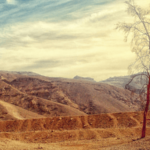Desert Plants
Desert plants are a diverse group of flora that have evolved unique adaptations to survive in some of the harshest environments on Earth. These plants must endure extreme temperatures, limited water availability, and nutrient-poor soils. Despite these challenges, desert plants have developed remarkable strategies that allow them to thrive where other plants cannot.
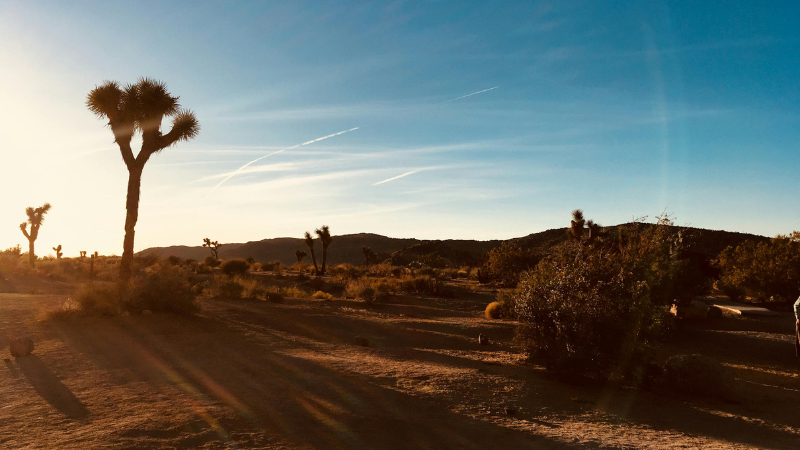
Desert plants, also known as xerophytes, are remarkable examples of nature’s ability to adapt to extreme conditions. Found in arid regions where water is scarce, these plants have evolved a wide array of physiological and structural adaptations that allow them to survive, and even flourish, in environments that would be inhospitable to most other forms of life
- Temperature Tolerance: Desert plants can withstand extreme temperature fluctuations, from scorching daytime heat to freezing nighttime cold.
- Efficient Nutrient Use: With soils often lacking in nutrients, desert plants have adapted to extract and use the limited resources available efficiently
Challenges facing desert plants
Desert plants face several challenges unique to their environment, including extreme temperatures, limited water availability, and nutrient-poor soils. To survive, these plants have developed a variety of adaptations that enable them to conserve water, withstand high temperatures, and efficiently extract nutrients from the soil.
Scarcity of Water: The most obvious feature of deserts is water scarcity. Rainfall is infrequent and unpredictable, often in intense bursts that quickly evaporate or disappear before the soil can absorb them. As a result, desert plants must survive long periods of drought.
Temperature extremes: Deserts are known for their extreme temperature fluctuations. Daytime temperatures can rise above 50 °C (122 °F), while nighttime temperatures can drop to near-freezing levels. This wide range of temperatures is a major challenge for plant life.
Nutrient-poor soil: Desert soils are often low in organic matter and nutrients, making it difficult for plants to get the nutrients they need to grow. Hard conditions also slow the decomposition rate, further limiting nutritional availability
These adaptations are often the result of millions of years of evolution, and they provide fascinating insights into the flexibility and ingenuity of life.
Adaptations of desert plants
Desert plants have developed a wide range of adaptations that allow them to survive in environments where water is scarce, temperatures are extremely high, and soils are nutrient-poor. These adaptations are often the result of millions of years of evolution, and they provide fascinating insights into the flexibility and ingenuity of life.
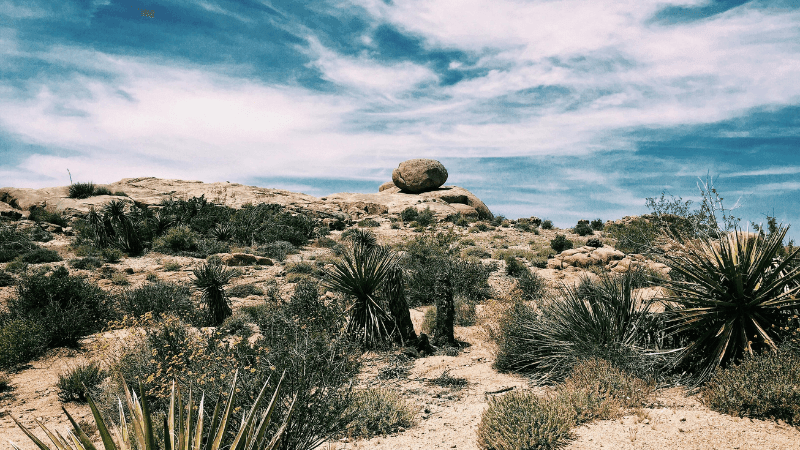
Desert plants are not just survivors; they are specialists who have turned one of the most challenging environments on Earth into their home. Their unique adaptations not only highlight the incredible diversity of life but also offer insights into sustainable living in arid and semi-arid regions
Water Storage: One of the most well-known adaptations is the ability of desert plants to store water. Succulents like cacti and agaves have thick, fleshy tissues that can hold large amounts of water. This stored water is used during prolonged dry periods, ensuring the plant’s survival when external water sources are unavailable
Many desert plants are experts at conserving water. They may store water in their tissues (succulents), reduce water loss through small or waxy leaves, or have deep root systems to tap into underground water sources
The capacity of desert plants to store water is one of their most significant adaptations. Given the lack of rainfall in deserts, plants must minimize water loss to survive.
1. Succulent: Succulent plants, such as cacti and agaves, store water in their thick, fleshy tissues. This water can be used during dry periods, allowing plants to survive long periods of drought. Succulent tissues are often protected by a waxy or spiny surface that reduces water loss through transpiration.
2. Shallow, broad roots: other desert plants. Given the lack of rainfall in deserts, plants must minimize water loss to survive.
3. Leaf Modification: Many desert plants have modified their leaves to reduce water loss. Some, like creosote bush, have small, waxy leaves that form a barrier against evaporation. Others, like cacti, reduce their leaves to spines, which not only reduces dehydration but also protects the plant from weeds.
4. Deep root systems:
Some desert plants, such as mesquite trees, have developed deep root systems that can access water far below the surface. These roots allow plants to survive in environments where surface water is not available for long periods.
Salt Tolerance: In some desert environments, such as coastal deserts or saline soils, plants like saltbushes have evolved the ability to tolerate high levels of salt. These plants may excrete excess salt through specialized glands or store it in older leaves that are eventually shed.
Ecological and Cultural Importance

Beyond their survival strategies, desert plants play crucial roles in their ecosystems. They provide food and shelter for a variety of desert animals, from insects to large mammals. Many desert plants, such as the prickly pear cactus and mesquite, also have significant cultural and economic importance. Indigenous peoples have long relied on these plants for food, medicine, and materials, and modern uses include landscaping, horticulture, and even agriculture in arid regions.
Examples of Desert Plants
- Joshua Tree
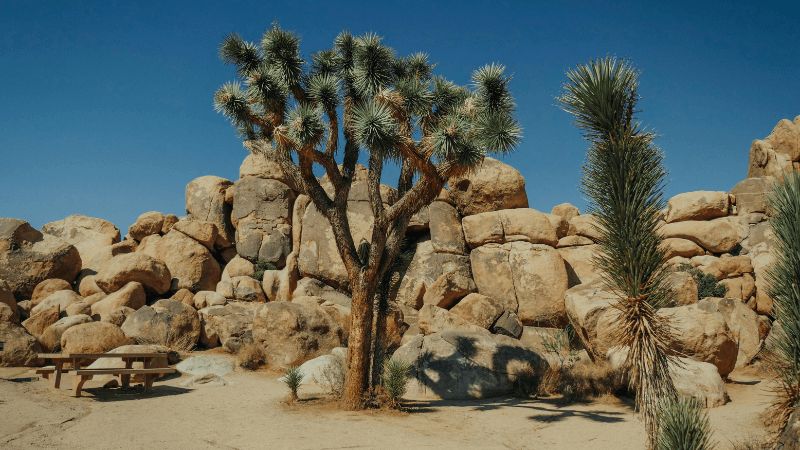
- (Yucca brevifolia): Native to the Mojave Desert, this iconic tree is known for its twisted, spiky branches. It provides critical habitat for many species and has a deep cultural significance for indigenous peoples.
- Ocotillo (Fouquieria splendens): This desert shrub has long, spiny stems that sprout leaves after rain, which are quickly shed during dry periods. The bright red flowers of the Ocotillo are a vital nectar source for hummingbirds.
- Palo Verde (Parkinsonia florida): Known as the “green stick” tree, the Palo Verde has green bark that allows it to photosynthesize even when its leaves are absent. It is a common sight in the Sonoran Desert and plays a key role in stabilizing desert soils.
- Barrel Cactus (Ferocactus spp.): This stout cactus is known for its ribbed, cylindrical shape and can store a large amount of water in its tissues. It is often a source of emergency water for desert travelers and animals alike
Deserts, with their vast, open landscapes and extreme environmental conditions, may at first glance seem inhospitable to life.
However, these arid regions are home to an amazing variety of plant species, each of which has adapted unique ways to survive and even thrive in such harsh environments. From the famous cacti of the American Southwest to the resilient shrubs of the Sahara, desert plants are a testament to the simplicity of life.
This guide is intended to introduce beginners to the fascinating world of desert fauna. We will examine the different types of desert plants, their remarkable adaptations to survive in harsh conditions, and the important roles they play in our ecosystems.
Additionally, we will examine the cultural and economic importance of these plants, providing insight into how they have been used by indigenous peoples and how they can be integrated into modern landscaping and gardening practices.
Whether you’re an aspiring botanist, gardening enthusiast, or simply curious about the natural world, this guide will give you a comprehensive understanding of the unique flora that call the desert home.
Understanding Desert Environments
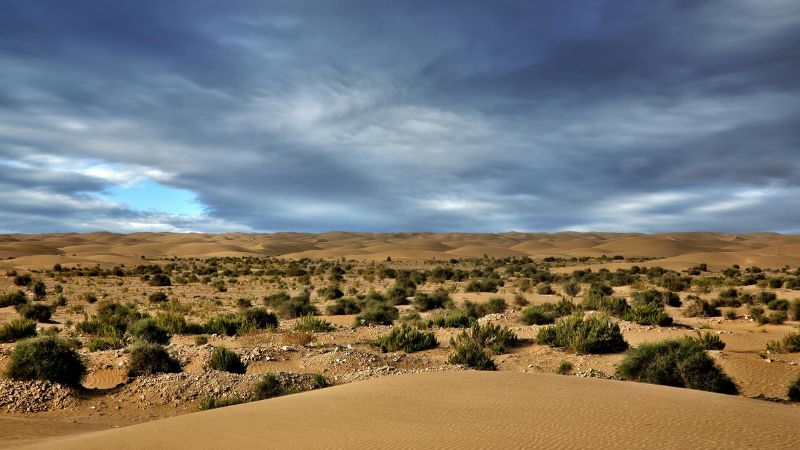
Before diving into the details of desert plants, it is important to have a clear understanding of the environment in which they live.
Due to their dry conditions, deserts are among the planet’s most extreme and difficult habitats. but the word “desert” refers to a wide range of environments, each with a unique climate, geology, and ecology.
A desert’s aridity is what defines it most fundamentally. Less than 250 millimeters (10 inches) of precipitation fall on these areas each year, which has a significant impact on the types of plants and animals that can thrive there. However, it’s vital to remember that deserts are defined by more than just their level of aridity; these environments are also greatly influenced by temperature, humidity, soil type, and geographic location.
variations in the climate and temperature, not all deserts are hot, despite the word desert frequently summoning images of searing sands and unrelenting sun. The two main types of deserts are hot and cold, and each poses different difficulties for the creatures that live there.
Types of deserts

1. Hot Deserts: Characterized by extremely high daytime temperatures, hot deserts like the Sahara, Arabian Desert, and Sonoran Desert are what most people think of as deserts. These regions experience hot summers, with daytime temperatures often exceeding 50 °C (122 °F), and minimal rainfall.
2. Cold Deserts: Cold deserts, such as the Gobi Desert in Asia and the Great Basin Desert in the United States, experience cold winters and relatively mild summers. These deserts receive more precipitation than hot deserts, often in the form of snow, which can stay on the ground for long periods.
3. Coastal deserts: Coastal deserts, such as the Atacama Desert in Chile and the Namib Desert in Africa, are affected by cold ocean currents. These deserts experience cooler temperatures than hot deserts but are still incredibly dry. Fog is a common source of moisture for plants in these environments.
4. Rain Desert: Built on the edge of mountain ranges, desert deserts such as the Mojave Desert in the United States and the Patagonian Desert in South America receive limited rainfall because the mountains prevent moist air from reaching them.
Types of desert vegetation
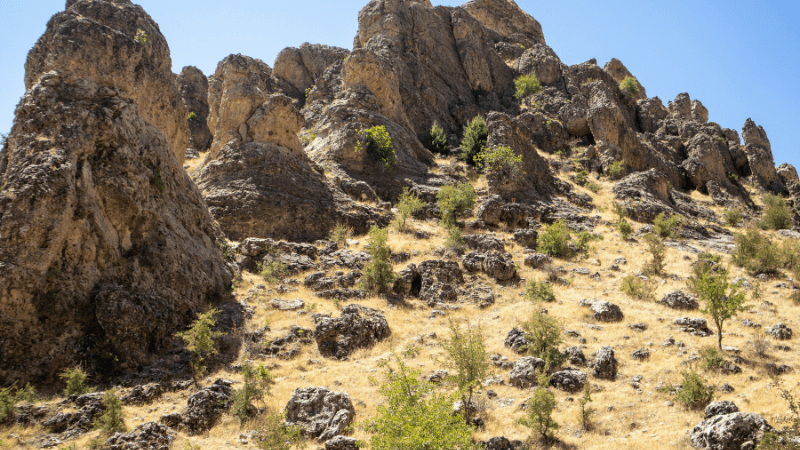
Desert plants are incredibly diverse, ranging from giant cacti to low-growing shrubs and ephemeral wildflowers. Despite differences in appearance, these plants share common strategies for surviving in dry environments.
Succulents are probably the most popular type of desert plant. These plants are characterized by their thick, fleshy tissues that store water. Succulents have evolved to make the most of rainfall in desert environments, absorbing water rapidly and storing it for use during dry periods.
1. Cacti: Cacti are a subset of succulents native to the Americas. They are easily recognized by their thick, spiny stems, which are designed to store water and deter herbivores.
2. Aloe: Aloe plants are succulents native to Africa, the Arabian Peninsula, and other arid regions. Aloe vera is perhaps the most famous species, known for its medicinal properties. Aloes store water in their thick leaves, which are also protected by a waxy coating that reduces dehydration.
3. Agave: Agaves are another group of succulents, native to America. These plants have dense, spiny leaves that form a rosette and are popular for their role in making wine. Agaves are long-lived and often die after flowering, a process known as monocarpic senescence.
Drought tolerant shrubs
Drought-tolerant shrubs are a common feature of desert landscapes. These plants are typically low-growing and have adaptations that allow them to conserve water and survive in nutrient-poor soils.
1. Creosote Bush: The creosote bush (Laria tridenta) is one of the most popular plants of North American deserts. This shrub has small, waxy leaves that reduce water loss and a deep root system that allows it to access underground water sources. Creosote bushes can live for thousands of years, making them some of the longest-lived plants on Earth.
2. Mesquite: Mesquite trees (Prosopis spp.) are found in deserts throughout the United States. These trees have deep roots that can reach groundwater well below the surface. Mesquite wood is valued for use in barbecues and as a food source for local people.
3. Salt Shrubs: Salt shrubs (Atriplex spp.) are shrubs that thrive in salty, alkaline soils, common in deserts. These plants have special glands that secrete excess salt, allowing them to survive in environments where other plants cannot.
Unlike long-lived succulents and shrubs, ephemeral wildflowers have short life cycles that allow them to take advantage of short periods of moisture. These plants germinate, grow, flower and set seed in a matter of weeks, making the most of the rare rains that deserts receive.
1. Desert Marigold: The desert marigold (Belia multiradiata) is a bright yellow wildflower that blooms in response to rain. This plant is a common sight in the American Southwest and is known for its resilience and ability to thrive in disturbed soils.
2. Desert Paintbrush: A Desert paintbrush (Castilleja spp.) is a wildflower that blooms in vibrant colors of red, orange, and yellow. These plants are partially parasitic, tapping into the root systems of other plants to obtain water and nutrients.
3. Desert Lily: The desert lily (Hesperocallis undulata) is a wonderful wildflower that blooms in the spring after the winter rains. This plant produces large, fragrant white flowers and is adapted to survive in sandy soil.
conclusion



